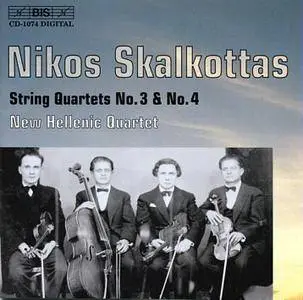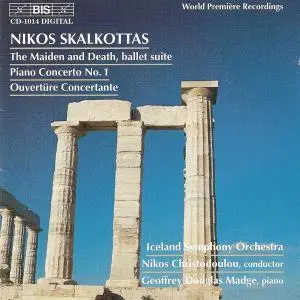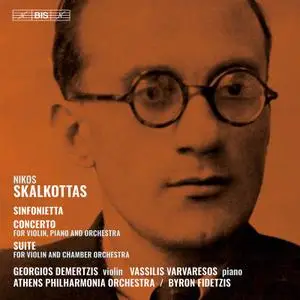New Hellenic Quartet - Nikos Skalkottas: String Quartets Nos. 3 & 4 (2000)
EAC | FLAC | Image (Cue&Log) ~ 270 Mb | Artwork included
Classical | Label: BIS | # BIS-CD-1074 | Time: 00:57:40
EAC | FLAC | Image (Cue&Log) ~ 270 Mb | Artwork included
Classical | Label: BIS | # BIS-CD-1074 | Time: 00:57:40
The BIS Skalkottas series goes from strength to strength, opening up a series of fascinating doors on the music of this neglected composer. The Third Quartet is a concise, three-movement piece, which seems to have been written at white heat, from its arresting opening, through the lyrical central Andante, to the contrasts of the final rondo. People often complain that they can’t follow serial music, but Skalkottas has a knack of writing memorable melodic shapes and devising contrasting textures which really underpin the musical structure: the first movement is one of the clearest examples of sonata form imaginable. The New Hellenic Quartet, led by Georgios Demertzis, who has already shown his prowess in recordings of Skalkottas’s solo violin music, performs with extraordinary virtuosity, passion and love – qualities which are even more apparent in the Fourth Quartet, a massive piece of amazing power and energy. The angry first movement must be one of the most concentrated eight-and-a-half minutes of music since Beethoven’s Fifth Symphony, while in the extended variations which follow, Skalkottas encompasses an enormous variety of moods. And, after the frenetic scherzo, the short finale (another rondo) reconciles the lyrical and incisive sides of the work. Terrific music – a terrific CD.





